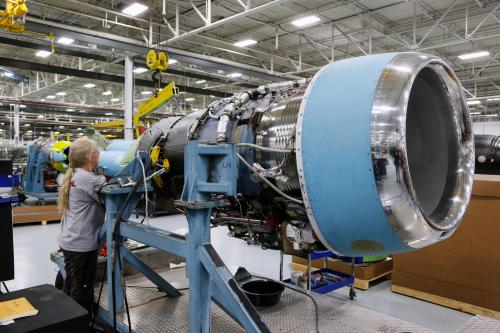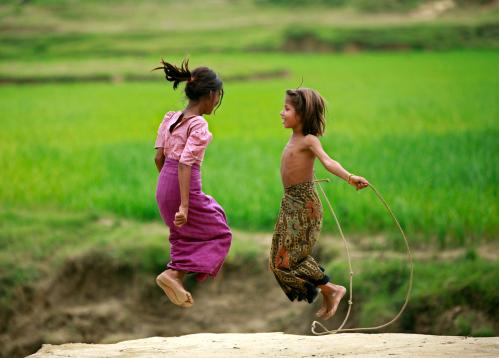The news has not been good for Latin America of late: after a “golden decade” (2002-2013) the tailwinds have dwindled. The marked economic slowdown in the region, especially in South America, and the stagnation in poverty reduction are accompanied by growing social discontent, serious corruption scandals, a sharp decline in the popularity of many presidents, and more complex conditions for governability in several countries.
For the OECD, this abrupt slowdown “is not cyclical, but has come to stay,” it is the “end of a cycle.” The IMF confirms this somber prognosis, correcting its projection of regional growth for 2015 downward to an anemic 1.3 percent. Nor is the news encouraging socially. According to a recent report by ECLAC, from 2013 to 2014 the poverty level stagnated at approximately 28 percent (167 million persons), while extreme poverty rose slightly (from 11.3 percent to 12 percent, for a total of 71 million indigents), which could be a sign of alarm in the context of this new cycle of greater economic uncertainty and more complex governability.
Let’s quickly review some national contexts. Venezuela is experiencing greater polarization, repression, and institutional degradation. In recent weeks President Maduro intensified political persecution against the opposition and just received “special powers” from the Legislative Assembly that will be in place until the end of 2015. In Argentina, President Fernández de Kirchner reacted forcefully against the “march of silence” held on February 18 as a tribute to Nisman, the prosecutor who was killed. New cabinet members were appointed and were warned of a (supposed) judicial and media onslaught aimed (according to her) at destabilizing her government.
The situation is equally complex in the two largest countries of the region. In Mexico, Peña Nieto failed to take advantage of the so-called “Mexican Moment” and is now making desperate efforts to recover his reform agenda and emerge in good standing from the mid-term elections (scheduled for June 7). These elections will be crucial for the second half of his six-year term. Brazil is experiencing a perfect storm: major economic slowdown, political corruption, and institutional blockage. Rousseff, re-elected just five months ago by a close margin, is experiencing how a toxic cocktail of low economic growth and high inflation – combined with corruption scandals associated with Petrobras – have provoked new and massive social demonstrations repudiating her rule. This in turn, is stressing the relationship between the executive and the legislature, increasing uncertainty, and has contributed to the collapse of her popularity (currently at a very weak 13 percent).
In the Andean region, while it is still premature to calculate the impact of a permanent fall in oil prices (except for the critical situation affecting Venezuela), it is clear that in several countries – Bolivia, Ecuador, and Colombia – there is growing concern on the part of the governments. In Peru, President Humala, whose popularity is also plummeting, had to breathe new life into his weak cabinet to avoid a censure vote. For its part, in Chile, the ambitious agenda of reforms promoted by President Bachelet and the corruption and influence-peddling scandals have the right (the Penta case) and the government (the Caval case) clashing in a harsh exchange of attacks and allegations.
In Central America, especially in the countries that make up the Northern Triangle (Guatemala, El Salvador, and Honduras), the situation is particularly worrisome because of the high poverty and inequality, fragile states, and high levels of corruption and crime. In addition the situation is compounded by the serious penetration of drug trafficking and organized crime.
Corruption scandals on the rise and plummeting popularity
We observe a strong wave of allegations of corruption and influence-peddling accompanied by social protest repudiating impunity, which are found throughout the region.
According to the recent report by Transparency International (2014), corruption levels are stagnant in the region; it points to Paraguay and Venezuela, followed by Honduras and Nicaragua, as the most corrupt countries in Latin America. Several of these scandals directly involve presidents or persons very close to them (Mexico, Argentina, Chile, and Peru), or ex-presidents (in Panama, the Supreme Court just opened a judicial proceeding against former President Ricardo Martinelli) or very weighty institutions (the Petrobras scandal may well become a veritable political earthquake in Brazil).
These changes in the economic and social outlook of the region and the corruption scandals are accompanied, in many countries, by a marked lack of confidence in the political parties and sharply falling approval ratings for the presidents. In Mexico, Brazil, Costa Rica, Venezuela, Peru, and Chile, to cite just a few cases, the presidents view with helplessness and concern how their levels of support have dropped precipitously.
My opinion
Are we at the end of a cycle? Do these phenomena foretell a change of historical magnitude, not only affecting the economic outlook but also the social mood, as well as the political and electoral scene in Latin America?
In the 12 presidential elections held in 2013 and 2014, this new scenario – while complicating the victory for the parties in power (especially in South America), requiring them to go to a second round, or yielding very tight results – was insufficient in the vast majority of cases to force alternation in power.
Yet beyond the recent election results, what is increasingly clear is that the combination of these factors (economic slowdown, stagnation in poverty reduction, a rise in allegations of corruption, and sinking approval ratings for the presidents) are an explosive combination foreshadowing major social conflict and much more complex governability in several countries of the region.
I ask myself: Do the institutions have the capacity to adapt to this new and complex regional scenario? Will they be able to respond to the growing demands of citizens ever more demanding of their democracy, their rights, and their public services? Do the democracies of the region have the political leadership and institutional buffers needed to address (with fewer economic resources available due to the end of the commodities boom) situations characterized by greater social conflictiveness and more complex problems of governability?
Of the elections scheduled for this year, two are especially important when it comes to identifying signals regarding this potential change in cycle. One is the legislative elections in Venezuela (scheduled for September), where the opposition finds itself in the best possible position to achieve a new balance of power between the executive and the legislature (if it is able to unite and eliminate its internal demons), despite the growing repression by Maduro and the lack of guarantees for a free, fair, and impartial electoral process. The other is the presidential election in Argentina, to be held in October, which not only could bring an end to the long period of Kirchnerismo but could also remove the Peronista movement from power. Are the oppositions in both countries capable of positioning themselves as true and credible alternatives to two governing parties that are hyper-presidentialist and populist? Despite having been in power for more than a decade, these incumbent parties still hold a considerable hard core of support. In the coming months we will find out whether the winds of change blowing in the region are strong enough to provoke a break in the cycle: or whether alternation in power will remain out of reach.
This article was originally published by International IDEA.


Commentary
Op-edIs Latin America prepared for a change in cycle?
March 27, 2015